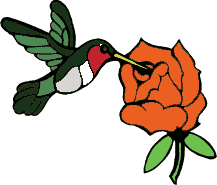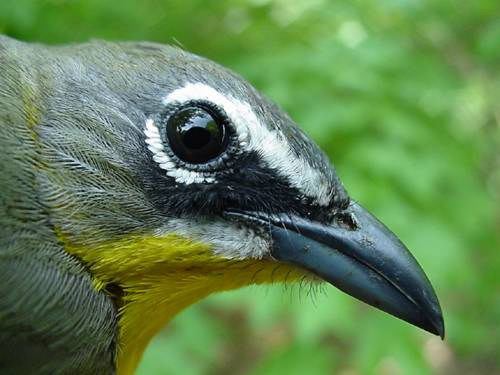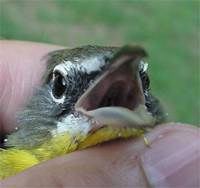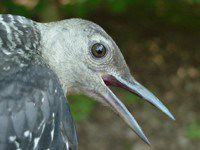 HOME: www.hiltonpond.org |
|
||
|
|
|||
|
|
|||
|
|
|||
|
|
|||
|
|
|||
|
THIS WEEK at HILTON POND |
 DON'T MISS DON'T MISS"HUMMINGBIRD MORNINGS" |
 HOME: www.hiltonpond.org |
|
||
|
|
|||
|
|
|||
|
|
|||
|
|
|||
|
|
|||
|
THIS WEEK at HILTON POND |
 DON'T MISS DON'T MISS"HUMMINGBIRD MORNINGS" |
|
Even for seasoned naturalists like those at Hilton Pond Center, it's sometimes difficult to avoid being anthropomorphic when working with wildlife. And we try not to think of anything in nature as "cute" or "ugly," believing that natural beauty lies in function, not form. Nonetheless, we were reminded last week that some organisms have almost human-like habits--a few of which are less than desirable. What we're talking about here is the fact that animals can cuss, and some are better at it than others.  We have heard litters of Short-tailed Weasel kits snarl and curse each other even before they were weaned, with no admonishment from their proud parents. The diminutive Southern Short-tailed Shrew can let go a few phrases upon occasion--especially when cornered or hungry. Irritated Gray Catbirds will swear--apparently in several languages--but in our judgment no animal is as profuse and proficient at cussing as the Yellow-breasted Chat. Like catbirds, a chat will spew forth a blue streak if angered or threatened. This is almost understandable, but the Yellow-breasted Chat seems to indulge in cursing and ranting for the pure pleasure of it . . . just to hear itself cuss. Each spring we know migration is peaking when the cacophonous sound of cussing chats spills out of thickets around Hilton Pond. Usually the cursing is quiet--almost as if a bird is cussing under its breath--but every now and again a chat will cut loose with a series of loud epithets that would scorch the beard off a sailor.
Yellow-breasted Chats (Icteria virens) are correctly classified as Wood Warblers (Parulinae)--they look rather like a heavy-billed Common Yellowthroat on steroids--but despite DNA evidence to the contrary, some ornithologists still believe chats may really be blackbirds. (This would help explain the cussing behavior of chats; warblers typically sing, while blackbirds such as Common Grackles and Brown-headed Cowbirds are known to get a little profane at times.) Regardless, Yellow-breasted Chats are Neotropical migrants that breed across the eastern U.S. and more sparingly in western states. They winter in Mexico and Central America, but it is not known whether chats can swear in Spanish.
Whatever should we do? Keep the invasive plants at Hilton Pond Center and we get thickets laden with Yellow-breasted Chats, eliminate the privet and we get native shrubs and wildflowers. What a dilemma! It's enough to make even a seasoned naturalist cuss like a . . . chat! If you enjoy "This Week at Hilton Pond," please help Support Hilton Pond Center for Piedmont Natural History |
|
 Lining of upper bill in adult female is light; compare with black bill lining of adult male in photo at right above.
The following species were banded this week (1-7 August): Ruby-throated Hummingbird--3* * = Includes at least one Recent Fledgling |
WEEKLY BANDING TOTAL YEARLY BANDING TOTAL (2001) 63 species 872 individuals BANDING GRAND TOTAL (since 28 June 1982) 122 species 39,155 individuals NOTABLE RECAPTURES WITH ORIGINAL BANDING DATES: Ruby-throated Hummingbird (1) 08/12/00 Chipping Sparrow (2) 03/28/99 03/22/00 Northern Cardinal (3) 07/31/93--9th Year male 07/17/94--8th year male 10/14/99  Red-bellied Woodpecker (fledgling) Young birds lack any red on the head |
|
Up to Top of Page Current Weather Conditions at Hilton Pond Center |
 post questions for The Piedmont Naturalist |
 Nature Study Network |
Hilton Pond Center |
|
|